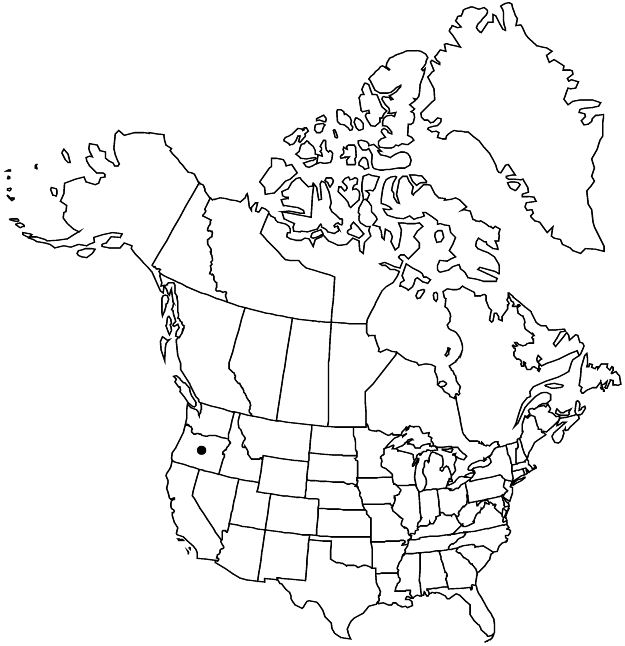Difference between revisions of "Sidalcea campestris"
Bull. Calif. Acad. Sci. 1: 76. 1885.
FNA>Volume Importer |
imported>Volume Importer |
||
| (6 intermediate revisions by 2 users not shown) | |||
| Line 16: | Line 16: | ||
|name=Sidalcea asplenifolia | |name=Sidalcea asplenifolia | ||
|authority=Greene | |authority=Greene | ||
| − | }}{{Treatment/ID/Synonym | + | |rank=species |
| + | }} {{Treatment/ID/Synonym | ||
|name=S. sylvestris | |name=S. sylvestris | ||
|authority=A. Nelson | |authority=A. Nelson | ||
| + | |rank=species | ||
}} | }} | ||
|hierarchy=Malvaceae;Malvaceae subfam. Malvoideae;Sidalcea;Sidalcea campestris | |hierarchy=Malvaceae;Malvaceae subfam. Malvoideae;Sidalcea;Sidalcea campestris | ||
| Line 34: | Line 36: | ||
|elevation=40–200 m | |elevation=40–200 m | ||
|distribution=Oreg. | |distribution=Oreg. | ||
| − | |discussion=<p>Sidalcea campestris is one of the taller species of Sidalcea and can be distinguished also by its range, hirsute indument, long inflorescences with spaced, long-stalked flowers, narrow very pale petals, and deeply incised pinnatifid stem leaves. It has been confused with S. hirtipes, S. nelsoniana, and S. oregana; it differs especially in characters of rhizomes, inflorescences, and leaves. It is a candidate for listing as threatened or endangered in Oregon. Specimens from British Columbia and Washington identified as S. campestris are either S. campestris escaped from cultivation or S. hendersonii. It is known as a native only from the Willamette Valley area (Multnomah and Washington to Benton and Linn counties). Apparently, it was introduced near Seattle, Washington; it may not persist there.</p> | + | |discussion=<p><i>Sidalcea campestris</i> is one of the taller species of <i>Sidalcea</i> and can be distinguished also by its range, hirsute indument, long inflorescences with spaced, long-stalked flowers, narrow very pale petals, and deeply incised pinnatifid stem leaves. It has been confused with <i>S. hirtipes</i>, <i>S. nelsoniana</i>, and <i>S. oregana</i>; it differs especially in characters of rhizomes, inflorescences, and leaves. It is a candidate for listing as threatened or endangered in Oregon. Specimens from British Columbia and Washington identified as <i>S. campestris</i> are either <i>S. campestris</i> escaped from cultivation or <i>S. hendersonii</i>. It is known as a native only from the Willamette Valley area (Multnomah and Washington to Benton and Linn counties). Apparently, it was introduced near Seattle, Washington; it may not persist there.</p> |
|tables= | |tables= | ||
|references= | |references= | ||
| Line 43: | Line 45: | ||
-->{{#Taxon: | -->{{#Taxon: | ||
name=Sidalcea campestris | name=Sidalcea campestris | ||
| − | |||
|authority=Greene | |authority=Greene | ||
|rank=species | |rank=species | ||
| Line 58: | Line 59: | ||
|publication year=1885 | |publication year=1885 | ||
|special status=Endemic | |special status=Endemic | ||
| − | |source xml=https:// | + | |source xml=https://bitbucket.org/aafc-mbb/fna-data-curation/src/2e0870ddd59836b60bcf96646a41e87ea5a5943a/coarse_grained_fna_xml/V6/V6_594.xml |
|subfamily=Malvaceae subfam. Malvoideae | |subfamily=Malvaceae subfam. Malvoideae | ||
|genus=Sidalcea | |genus=Sidalcea | ||
Latest revision as of 23:22, 5 November 2020
Herbs, perennial, 0.5–2 m, sometimes glaucous in age, with thick, rather woody taproot and short rhizomes usually to 10 cm × 10 mm. Stems single or clustered, erect, base often decumbent-ascending, solid (proximally hollow on older stems), proximally densely bristly-hirsute, hairs simple or forked, 0.5–1 mm, sometimes mixed with minute, stellate hairs, sometimes glabrous and glaucous in age, hairs usually more appressed, simple, stellate, or sparse distally. Leaves mostly cauline; stipules lanceolate, 4–11 × 1–1.5 mm; petioles of proximal leaves 15–20 cm, 2–3 times as long as blades, distal reduced to 0.5–10 cm, 1/2 times to as long as blades; blade 10–15 × 10–15 cm, smaller distally, surfaces scabrid-hairy, hairs dense, simple or stellate, stiff, stellate hairs mostly on adaxial surfaces, proximal blades orbiculate, shallowly to deeply palmately 7–9-lobed, 5–15 × 5–15 cm, base cordate, margins coarsely crenate-serrate, lobes apically 2–5-toothed; distal cauline leaves variable, mid blades usually palmately divided nearly to base into 5–7 cuneate lobes, 15 × 15 cm, lobes deeply cut to laciniately dissected, distal blades divided into (3–)5–7 linear, marginally subentire segments, surfaces glabrescent or with few hairs on abaxial surface veins, ciliate. Inflorescences erect, open, spiciform, calyces not conspicuously overlapping except sometimes in bud, often branched from distal leaves, 15+-flowered, elongate, not 1-sided, 10–35 cm, proximal flowers spaced several cm apart, not leafy-bracted; bracts linear, distal undivided or 2-fid, proximal separate to base, 4–10 mm, usually equaling or longer than pedicels. Pedicels 3–6(–20) mm; involucellar bractlets absent. Flowers bisexual or unisexual and pistillate, plants gynodioecious; calyx 5–9 mm, pistillate 5–7 mm, bisexual 6–9 mm, 8–10 mm in fruit, uniformly, densely stellate-hairy or with coarser, longer, stellate hairs to 2 mm; petals usually not overlapping, nearly white to pale pink or pale lavender, pistillate 9–12 mm, bisexual 13–25 mm; staminal column 5–7 mm, hairy; anthers white to pale pink; stigmas (6 or)7 or 8. Schizocarps 7–8 mm diam.; mericarps (6 or)7 or 8, 3.5 mm, roughened, sides prominently reticulate-rugose and pitted, back less so and glandular-puberulent, mucro 0.5–1 mm. Seeds 2.5 mm. 2n = 60.
Phenology: Flowering May–Aug.
Habitat: Open shrublands, meadows, hedgerows, prairies
Elevation: 40–200 m
Discussion
Sidalcea campestris is one of the taller species of Sidalcea and can be distinguished also by its range, hirsute indument, long inflorescences with spaced, long-stalked flowers, narrow very pale petals, and deeply incised pinnatifid stem leaves. It has been confused with S. hirtipes, S. nelsoniana, and S. oregana; it differs especially in characters of rhizomes, inflorescences, and leaves. It is a candidate for listing as threatened or endangered in Oregon. Specimens from British Columbia and Washington identified as S. campestris are either S. campestris escaped from cultivation or S. hendersonii. It is known as a native only from the Willamette Valley area (Multnomah and Washington to Benton and Linn counties). Apparently, it was introduced near Seattle, Washington; it may not persist there.
Selected References
None.
